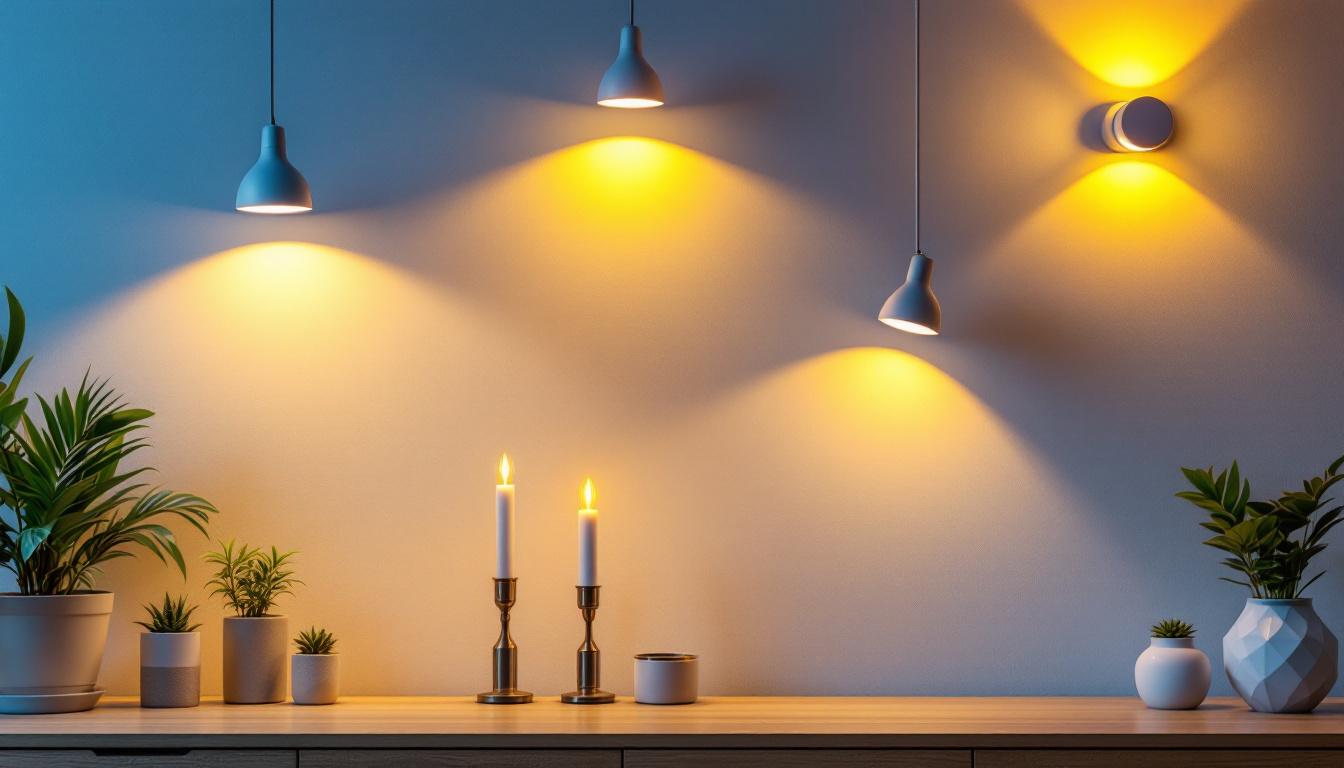
For lighting contractors, mastering the cost structure of can lights is essential to provide accurate estimates and deliver value to clients. Can lights, also known as recessed lights, offer a sleek and modern lighting solution that integrates seamlessly into ceilings. However, their cost can vary widely based on several factors including the type of fixture, installation complexity, and the materials used.
At its core, the cost of can lights breaks down into two primary components: the fixture price and the installation cost. Fixtures themselves range from basic models to high-end options with advanced features such as dimmability, energy efficiency, and aesthetic finishes. Installation costs are influenced by the ceiling type, accessibility, and whether new wiring or electrical upgrades are necessary.
Understanding these elements helps lighting contractors develop competitive bids while ensuring profitability. It also allows for transparent communication with clients, setting realistic expectations about budget and project scope.
Can light fixtures come in several varieties, each with distinct price points. Basic incandescent or halogen can lights are typically the most affordable but are less energy-efficient and have shorter lifespans. LED can lights, increasingly popular due to their longevity and energy savings, generally command higher upfront costs but offer better value over time.
Specialty fixtures, such as those with adjustable trims, integrated smart technology, or decorative finishes, can significantly increase the fixture price. For contractors, understanding the client’s preferences and the intended application is key to selecting the right product that balances cost and performance. Additionally, the choice of color temperature can also influence the overall ambiance of a space, with warmer tones creating a cozy atmosphere and cooler tones providing a more vibrant, energetic feel. This consideration can further guide clients in making informed decisions that align with their design vision.
Installation costs often constitute a substantial portion of the overall expense. Factors such as ceiling height, material (drywall, plaster, or drop ceiling), and existing electrical infrastructure impact labor time and difficulty. For example, retrofitting can lights into an existing ceiling without prior wiring can be labor-intensive and require additional materials, increasing costs.
Moreover, compliance with local electrical codes and safety standards can necessitate permits or inspections, adding to the timeline and expenses. Lighting contractors should factor in these variables when estimating labor costs to avoid underquoting and ensure project profitability. Furthermore, the use of advanced tools and techniques, such as laser measuring devices or specialized mounting systems, can streamline the installation process, potentially reducing labor time and costs. However, these tools may also represent an additional investment for contractors, making it crucial to weigh the benefits against the upfront expenditure when planning projects.
Several critical factors influence the overall cost of can lighting projects. Recognizing these enables contractors to tailor their proposals effectively and manage client expectations.
Energy-efficient can lights, particularly LED models, have become the industry standard due to their reduced power consumption and extended lifespan. While the initial cost may be higher compared to traditional lighting, the long-term savings in energy bills and maintenance often justify the investment.
Lighting contractors should educate clients on the total cost of ownership, emphasizing how energy-efficient fixtures can reduce operational expenses over time. This approach not only adds value but also positions contractors as knowledgeable advisors rather than mere installers. Furthermore, many regions offer incentives or rebates for installing energy-efficient lighting, which can further offset initial costs and encourage clients to make the switch. By staying informed about these programs, contractors can provide clients with additional financial benefits, making the transition to LED lighting even more appealing.
The trim—the visible part of the can light—affects both aesthetics and cost. Standard trims are affordable and functional, but premium trims made from materials like brushed nickel or bronze can elevate the look of a space and increase the fixture price. Similarly, the housing, which is installed above the ceiling, varies in quality and features such as airtight seals or insulation compatibility, impacting cost and performance.
Contractors should guide clients through these options, balancing design preferences with budget constraints. Offering a range of choices can help secure projects by accommodating diverse client needs. Additionally, the choice of trim can influence the overall ambiance of a room; for instance, a sleek, modern trim may complement contemporary decor, while a more ornate design might suit traditional interiors. By understanding the client’s vision and the specific characteristics of their space, contractors can recommend the most suitable trim options that enhance both functionality and style.
Large-scale projects involving multiple can lights often benefit from bulk purchasing discounts on fixtures and materials. Contractors can leverage relationships with suppliers to negotiate better pricing, thereby improving margins or passing savings onto clients.
Additionally, economies of scale can reduce labor costs per unit, especially when installations are planned efficiently. Lighting contractors should analyze project scope carefully to optimize procurement and scheduling strategies. For instance, grouping installations by area or floor can streamline the process, reducing downtime and labor costs. Moreover, larger projects may also attract attention from subcontractors or specialists who can offer competitive rates, further enhancing the overall cost-effectiveness of the project. By strategically planning and executing these installations, contractors can maximize both efficiency and profitability while ensuring a high-quality outcome for their clients.
Accurate cost estimation is a cornerstone of successful lighting contracting. Several resources and tools can aid contractors in mastering can light cost calculations and project management.
Comprehensive cost databases provide up-to-date pricing information on fixtures, materials, and labor rates. Platforms such as RSMeans or similar construction cost guides offer detailed breakdowns tailored to electrical and lighting work. These resources help contractors benchmark their estimates against industry standards.
Estimating software solutions integrate these databases with project-specific variables, enabling contractors to generate precise quotes quickly. Features often include customizable templates, material lists, and labor productivity factors, streamlining the bidding process and reducing errors. Additionally, many of these software programs now incorporate cloud-based functionalities, allowing teams to collaborate in real-time and access their estimates from anywhere, enhancing flexibility and responsiveness to client needs.
Fixture manufacturers frequently publish detailed catalogs with specifications, pricing, and installation guidelines. Staying current with these materials ensures contractors recommend appropriate products and accurately price them. Many manufacturers also offer technical support and training, which can enhance contractor expertise and confidence.
Engaging directly with suppliers can also reveal promotional offers or volume discounts, providing competitive advantages during bidding. Moreover, many manufacturers are now investing in online platforms that allow contractors to visualize lighting solutions through augmented reality tools, helping them to better understand how different fixtures will look in various environments. This not only aids in accurate cost estimation but also enhances client presentations and decision-making processes.
Professional development through workshops, webinars, and certification programs keeps contractors informed about the latest technologies, codes, and best practices. Associations such as the National Association of Electrical Contractors (NAEC) or the Illuminating Engineering Society (IES) offer valuable resources tailored to lighting professionals.
Participation in these organizations fosters networking opportunities and access to exclusive market insights, which can translate into improved cost estimation and project execution. Additionally, many associations provide access to case studies and white papers that delve into successful project implementations, allowing contractors to learn from real-world examples and apply those lessons to their own work. This continuous learning environment not only sharpens technical skills but also cultivates a mindset geared towards innovation and excellence in the lighting industry.
Beyond understanding costs and leveraging resources, lighting contractors can adopt practical strategies to enhance project outcomes and client satisfaction.
Before finalizing estimates, a detailed site visit is crucial to identify potential challenges such as ceiling obstructions, wiring conditions, and access limitations. Early detection of these factors prevents unexpected costs and delays.
Documenting site conditions with photos and notes also supports transparent communication with clients and subcontractors.
Breaking down quotes into fixture costs, labor, permits, and contingencies helps clients understand the pricing structure. Transparency builds trust and reduces the likelihood of disputes during or after project completion.
Including options for different fixture types or installation methods can empower clients to make informed decisions aligned with their budgets.
Electrical codes and energy efficiency standards evolve regularly, impacting fixture selection and installation requirements. Contractors who stay informed can ensure compliance, avoid costly rework, and advise clients on eligible rebates or incentives.
Utilizing these incentives can lower overall project costs and enhance the appeal of energy-efficient lighting solutions.
Digital tools for scheduling, communication, and documentation improve coordination among team members and subcontractors. Efficient project management minimizes downtime and errors, contributing to cost control and timely completion.
Additionally, using mobile apps for on-site data collection and client updates enhances professionalism and responsiveness.
For lighting contractors, mastering the cost dynamics of can lights is more than a technical necessity—it is a strategic advantage. By understanding fixture options, installation complexities, and influencing factors, contractors can deliver precise estimates that align with client expectations and project goals.
Utilizing industry resources such as cost databases, manufacturer support, and continuing education equips contractors with the knowledge and tools to stay ahead in a competitive market. Coupled with practical project management strategies and transparent communication, these competencies foster client trust and business growth.
Ultimately, a well-informed approach to can light costs enables lighting contractors to optimize profitability while delivering high-quality, energy-efficient lighting solutions that satisfy both aesthetic and functional demands.
Ready to elevate your lighting projects with cost-effective, high-quality can lights? Look no further than LumenWholesale, where we specialize in providing contractors with spec-grade lighting products at wholesale prices that simply can’t be beaten. Say goodbye to local distributor markups and hello to our extensive selection that meets rigorous industry standards. With LumenWholesale, you’ll enjoy the convenience of free shipping on bulk orders, ensuring you get the premium lighting you need at the best price, without any hidden fees. Don’t compromise on quality or cost. Visit LumenWholesale today and discover the ideal blend of quality, affordability, and convenience for all your lighting needs.

Discover innovative tips and tricks for installing fluorescent bulbs efficiently.

Discover how light sensor outdoor technology revolutionizes safety in lighting installations.

Discover how under counter lighting is revolutionizing the lighting industry with its blend of functionality and style.

Discover why dimmer switches with integrated lights are becoming indispensable tools for modern lighting contractors.